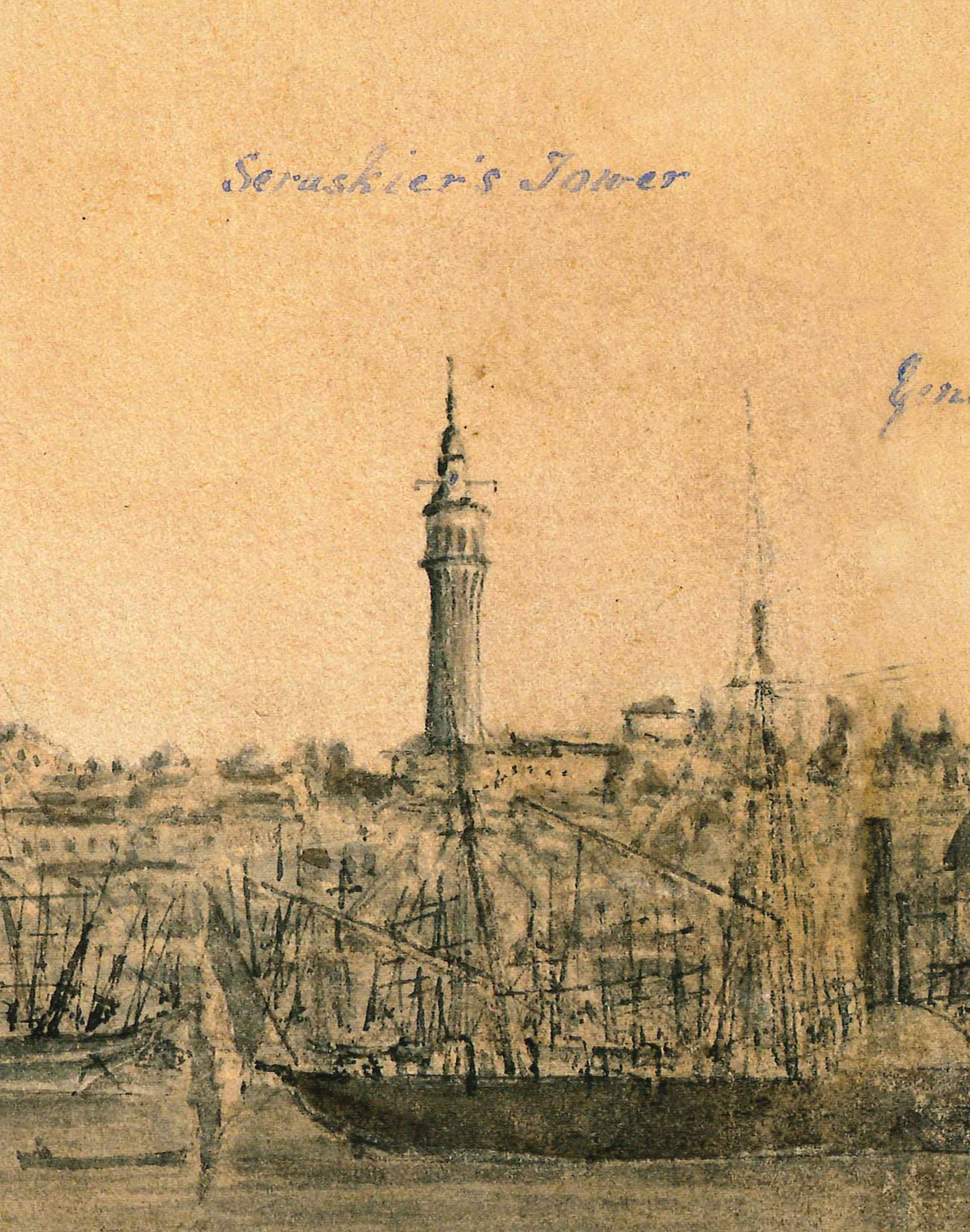
Montagu B. Dunn, Panorama of Istanbul, 1855
Following Mahmud II’s (r.1809-1839) abolishment of the Janissary Corps in 1826 and the allocation of the Residence of the Agha of the Janissaries to Bâb-ı Meşihat (The office of the Sheikh-ul Islam), Fire Tower was erected in 1828 in the garden of the of the Bâb-ı Seraskerî (Offices of the War Ministry), called later Harbiye Nezareti (Ministry of War), which had replaced the former Old Palace and used as the administrative centre of the new Ottoman Army (Asâkir-i Mansûre-i Muhammediye). Built out of rough-hewn limestone, the 85 meter-high tower began to serve the same function of the Fire Brigade Pavillion located in the courtyard of the former Residence of the Aghas of the Janissaries (Ağa Kapısı). As typically seen in the minarets of the period, the transition from the base, which is shaped as a truncated pyramid, to the cylindrical shaft, is effected in the form of an ogee footing. The original wide-eaved timber spire was removed during the restoration in 1849 and was instead replaced by three new octagonal floors with circular (“elephant’s eye”) windows.